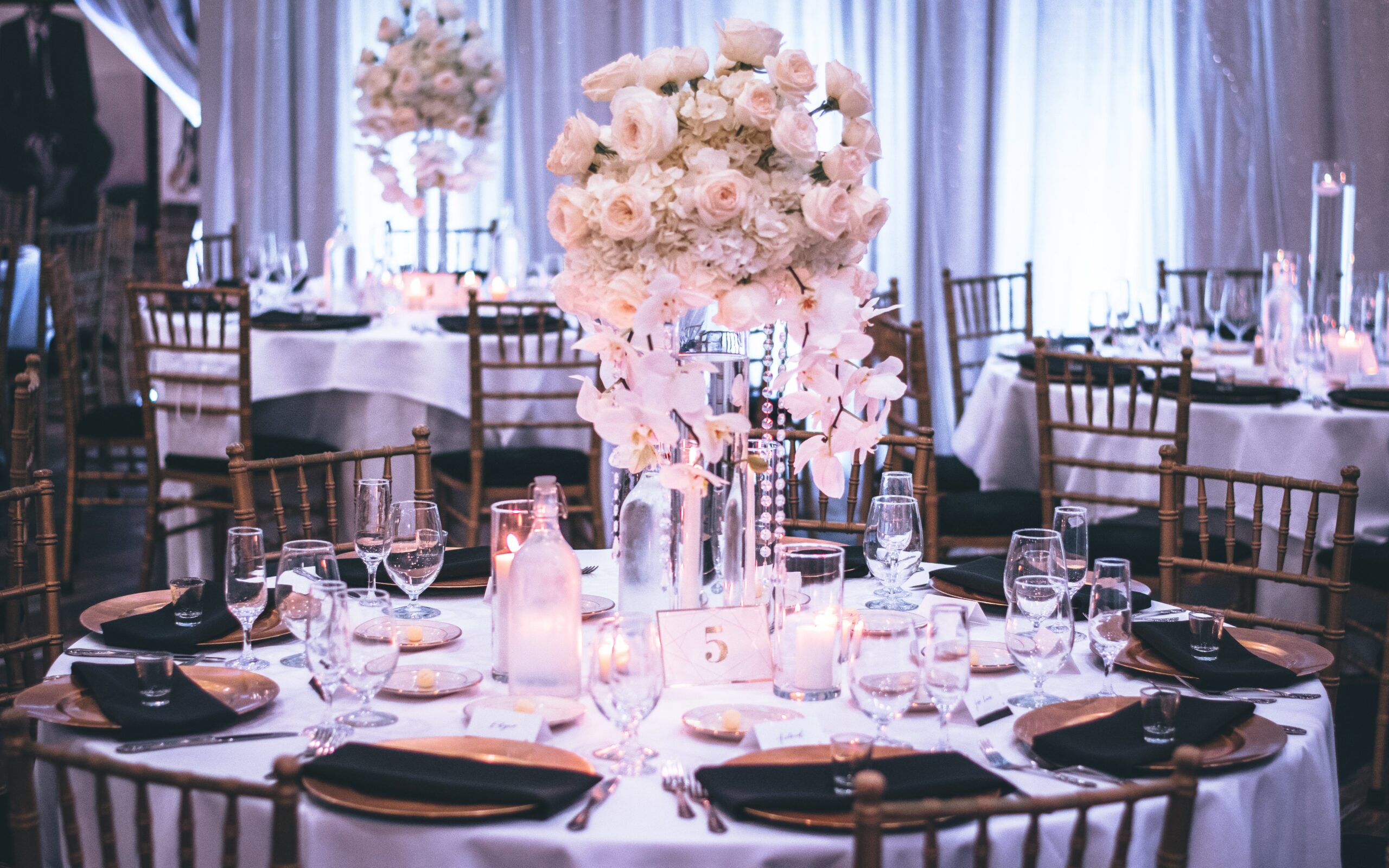Seating Your Guests

Couples dread creating seating charts as much as writing their guest lists. Nevertheless, it’s a task which must be completed.
The experience your guests have at the wedding will be based on a number of aspects of the celebration, including who they sit with. Guests should feel comfortable sitting and engaging in conversation with those sitting next to them.
While you may feel your guest should be able to choose their own seats. What you don’t realize is that it may be more complicated for them to do so. As a guest, it can be stressful to find a seat at a table with people you know and if you don’t know anyone, it can be even more difficult.
Although it may be time consuming, making a seating chart is the best option if you want to make your sure your guests have a wonderful time at your wedding.
Use our tips to create a seating chart you and your guests will feel comfortable with.
Start your chart early
Begin your seating chart immediately after you receive your response cards. Call any guests who have not responded to your invitation as long as its past the deadline that was on your invites.
Decide where you and your fiancé will sit
You and your fiancé will need to decide whether you want to sit at a sweetheart table by yourselves or at the head table with your bridesmaids and groomsmen.
Some couples prefer to sit at sweetheart tables because they are private and give you and your new husband or wife a little time to talk to one another and reflect on the day’s events. Because you’ll spend most of the day greeting and thanking guests and making sure everything is running on schedule, you and your fiancé will appreciate a few minutes to be by yourselves.
Sweetheart tables also allow your bridesmaids and groomsmen to sit with their dates – if they have them – rather than at the head table.
Head tables are a traditional choice and still popular among brides and grooms. Head tables are typically higher than the other tables and face guests, so everyone can see the bride, groom and attendants during mealtime. Typically, the head table is made up of the bride, groom, maid/matron of honor, best man, bridesmaids and groomsmen. The flower girl and ring bearer typically sit with their parents. The head table can include your attendants’ dates if you decide to seat them there, just make sure you find a large enough table.
Consider your guests’ ages
Grouping guests by age is sometimes better than seating them with just their immediate family members. Kids and teenagers are often happiest with cousins and friends their own age – many of them will be bored sitting with their parents. Have a children’s table for young guests and set up a table for teens if you have guests who are between the ages of 13 and 17.
Keep family ties in mind
Make sure to keep family issues and relationships in mind when making the guest list. If you have relatives you don’t know well attending your wedding, ask your parents for assistance when deciding where those guests should be seated. Make sure to work on the guest list with your fiancé and ask his or her parents for assistance, as well.
Divorces, breakups and family feuds will make creating guest lists challenging, so it is best to know about any issues going on with relatives ahead of time.
Avoid the singles-only table
Avoid seating your single guests all together. If you think your single college roommate may hite it off with your fiancé’s old fraternity brother, seat them together. However, don’t seat all your single girlfriends together or have a table of bachelors. It is best to seat your single guests with their friends or people you think they will get along with. Don’t make your single pals feels ostracized at a table by themselves just because they are single.
Talk to your parents
Couple often seat their parents at a parents’ table. The mother of the bride and groom and father of the bride and groom will sit at this table together with grandparents and brothers and sisters of the couple who are not in the wedding party. Since many people are divorced, however, this may not be the best option for you. Talk to your parents about where they feel the most comfortable. If you decide not to seat both sets of parents together, try seating them at tables near each other. Above all – make sure your parents are comfortable with the arrangements.
By: Lauren Finnegan
